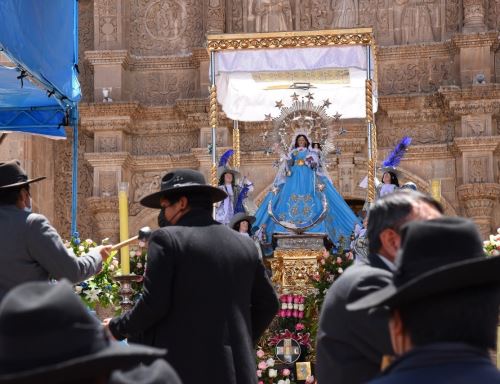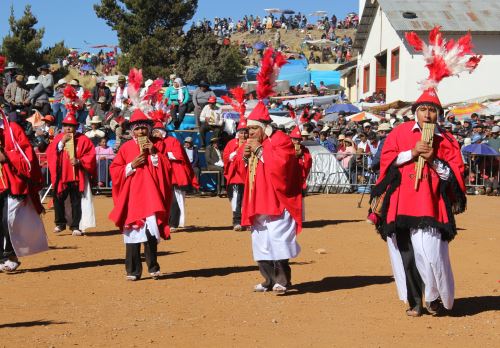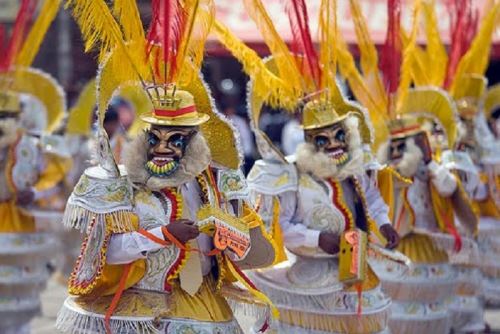14:41 | Puno (Puno region), Feb. 10.
One of the most significant highlights in the festival honoring the
Virgin of Candelaria is the Octave, a celebration that includes religious rites dedicated to venerating the patron saint of Puno with deep faith and devotion. It is also marked by a grand display of traditional dance and music, showcasing why this highland region is considered the folkloric capital of Peru.
It is worth noting that the Festival of the Virgin of Candelaria was declared National Cultural Heritage on September 2, 2003.
It was later inscribed on the Representative List of the Intangible Cultural Heritage of Humanity by the United Nations Educational, Scientific and Cultural Organization (UNESCO) on November 27, 2014.
What is the Octave?
The Octave is a special celebration held seven days after February 2, the commemorative day of the festival. It is named as such because it marks the continued solemn eight-day celebration in honor of the Virgin of Candelaria.
Significance
The Octave is significant because it marks the culmination of the central tributes to the Mamacha Candelaria.
It includes a series of religious and cultural events featuring traditional dance and music, further establishing Puno as a benchmark for Peruvian folklore.

Key Religious Events
The Octave's emblematic events begin in the morning with a solemn liturgical celebration led by the Bishop of Puno at the Sanctuary of the Virgin of Candelaria, located in San Juan Bautista Church.
Attending this special Mass are civil, religious, and military authorities, as well as members of religious associations, brotherhoods, and numerous devotees from Puno and other regions of Peru.
Following the Eucharistic ceremony, a grand fireworks display takes place, including the burning of castles (large firework structures).
This spectacle is accompanied by the melodies of Sikuris, musicians who play the siku (also known as zampoña or antara), an ancient wind instrument made from reeds of various sizes.

Afterward, the procession begins, with the Virgin of Candelaria's image carried through the main avenues and streets of Puno on an ornate float, carried by teams of bearers and followed by a multitude of faithful devotees.
The streets along the route are beautifully adorned with colorful floral carpets.
Magnificent Folkloric Display
Parallel to the religious events, the spectacular "Trajes de Luces" (Costumes of Light) dance competition takes place in the afternoon at Enrique Torres Belon Stadium.
This iconic venue hosts dozens of dance troupes performing emblematic dances from Puno, such as Morenada, Caporal, Diablada, Kullahuada, Tinkus, and Sikuris.
Their vibrant costumes, exuberant energy, and meticulously choreographed performances create a breathtaking spectacle.
Additionally, folkloric groups from other regions, including Arequipa, Apurimac, Cusco, Huancavelica, Huanuco, Junin, and Lima, also participate as special guests.
The dancers are accompanied by large marching bands, whose relentless and masterful performances provide the perfect backdrop of grandeur and solemnity, making this celebration a source of pride for the people of Puno and all of Peru.

(END) LZD/MAO/JMP/MVB
Published: 2/10/2025